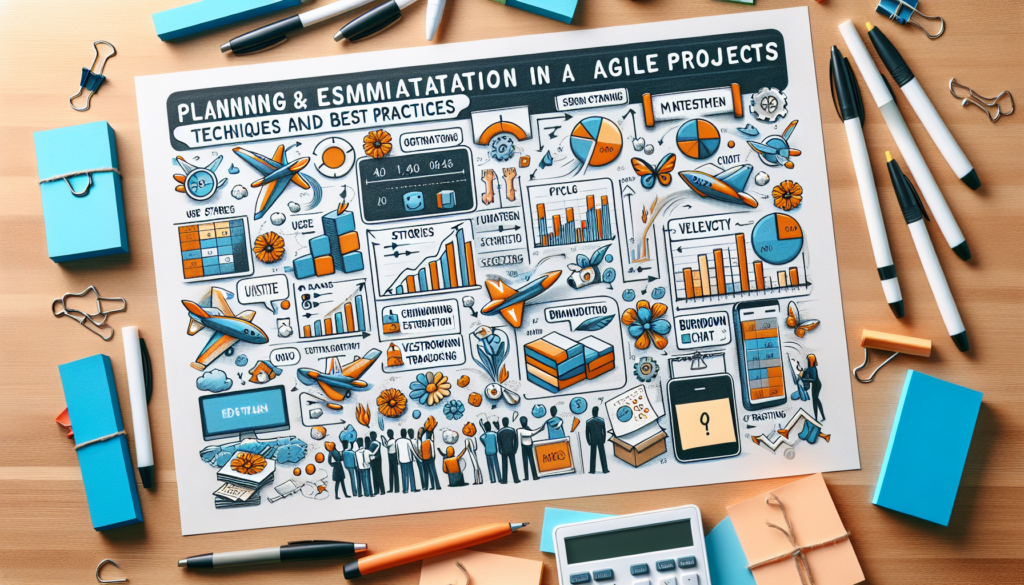The implementation of Agile frameworks has revolutionized the project management landscape in numerous industries, providing flexibility, adaptability, and a strong emphasis on customer satisfaction. In this context, planning and estimation emerge as essential components for the successful management of projects governed by this methodology. Accuracy in these phases determines not only efficiency in product delivery but also the ability to manage stakeholder expectations and appropriately guide team resources.
Agile Estimation Techniques
Story Point Estimation: Based on the relative complexity of tasks, this technique allows comparison of features and assigns them a value, which is then used to predict the required effort. It uses scales like Fibonacci, T-shirt sizing, or the binary sequence.
Planning Poker: A collaborative consensus is facilitated through rounds of ‘betting’ where team members select cards representing story points they believe correspond to the effort needed to complete a back-log item.
Bucket System: A quick classification strategy for relatively sized items into predefined groups. The groups are often sequences of numbers representing levels of effort or user story sizes.
Affinity Estimation: This process allows refinement of estimates through group discussion and analysis of additional information obtained during project progress.
Iterative Planning and Release Planning
Iterative Planning: Divided into sprints normally of 2 to 4 weeks, planning is adjusted and reprioritized repeatedly to reflect changes in the environment and team learning.
Release Planning: Defines when and what features will be delivered. This becomes a high-level roadmap that serves to guide subsequent iterative planning and to communicate external expectations.
Prioritization Techniques
MoSCoW: Divides product features into four categories: Must have, Should have, Could have, and Won’t have for now, helping to identify and separate the essential from the desirable.
Value-Based Prioritization: Prioritizes user stories based on the value they bring to the business or the end user, balancing cost and benefit.
Kano Model: Classifies functionalities into five categories based on their ability to satisfy customers: Basic, Performance, Excitement, Indifferent, and Negative.
Implementation of Best Practices
Use of Hybrid Methodologies: The combination of Agile techniques with other more traditional practices, such as Waterfall, to leverage the best of both worlds in specific project situations.
Continuous Retrospectives: Regular and systematic sessions to analyze what has worked well and what can be improved, with the goal of constantly perfecting project delivery.
Handling of Unforeseen Events and Changes: Agile advocates for flexibility and expects changes, so a best practice includes having a plan to quickly and seamlessly address changing needs.
Effective Communication: A fundamental tool for alignment between the team and stakeholders, good communication ensures transparency and mutual understanding in expectations.
Digital Tools in Agile Planning
JIRA Software: Offers project and issue tracking functionalities with an interface that allows efficient management of sprints, backlogs, and releases.
Trello: A more visual approach where tasks are managed through boards and cards that can be customized to fit the team’s Agile methodology.
Asana: Provides a clear view of the projects with tools that facilitate planning, tracking, and managing teamwork over time.
Current Case Studies
In the technology sector, companies like Spotify and Netflix have perfected their own Agile models, adapting frameworks such as Scrum to their culture, and testing new estimation and planning methods to maintain their leadership in innovation.
In the enterprise software industry, Microsoft has integrated Agile methodologies into its development cycle, allowing them to release updates and new features at a constant pace and with high quality.
In the financial sector, banks like ING have adopted Agile frameworks to improve their response time to market demands and the constant evolution of financial technology.
The application of advanced techniques in project planning and estimation under the Agile framework is a constantly evolving field, with each organization adjusting and fine-tuning its methodologies to match its unique culture and needs. The rigor of this coordinated approach, leveraged by the inherent flexibility of Agile, projects a future where adaptability will be the main competitive advantage for organizations seeking not just to survive but to thrive in an increasingly volatile and accelerated business landscape. The approach to these practices is not static, but resides in continuous improvement and adaptability, emphasizing the importance of retrospectives and learning as pillars in modern project management.

